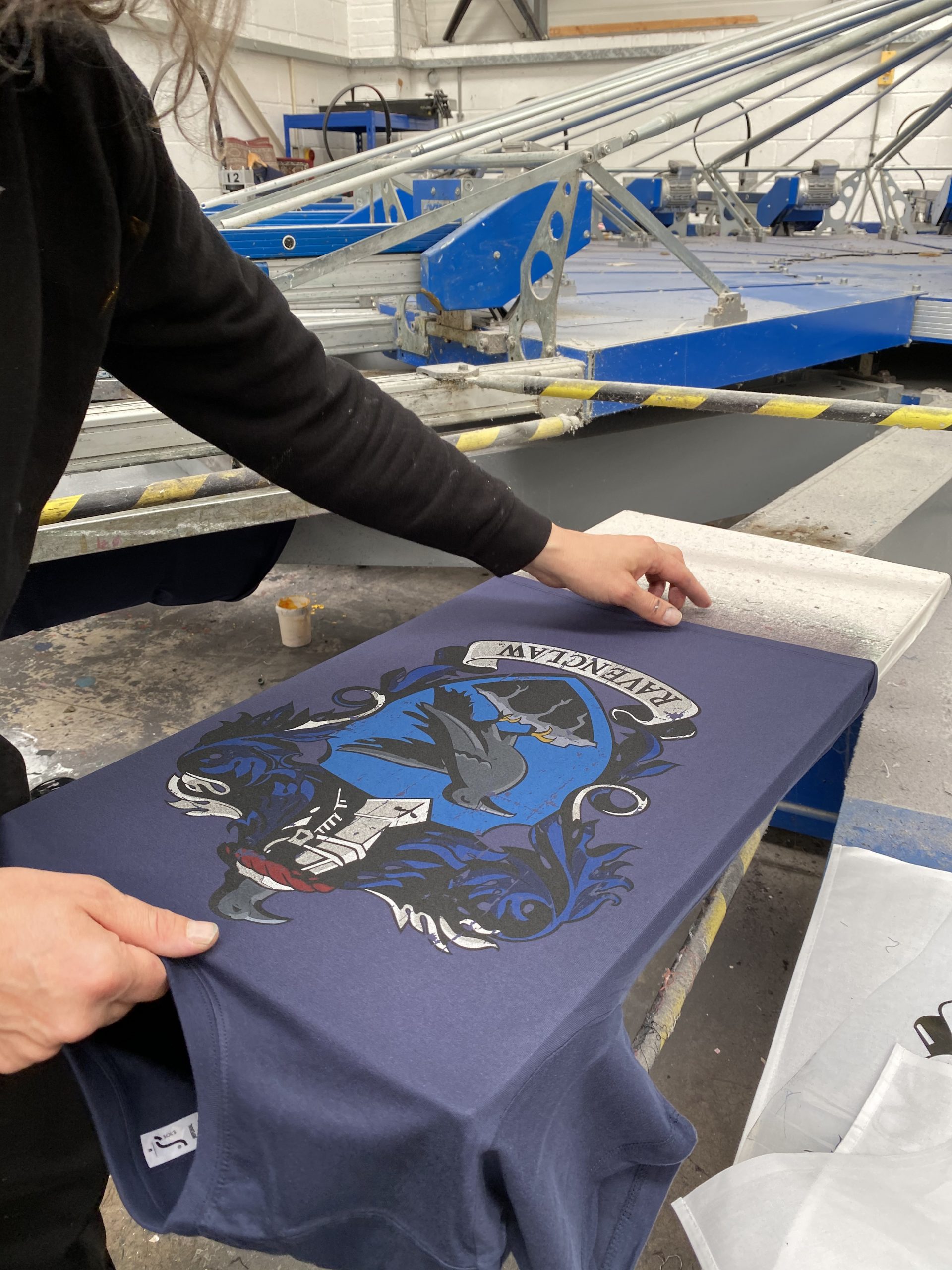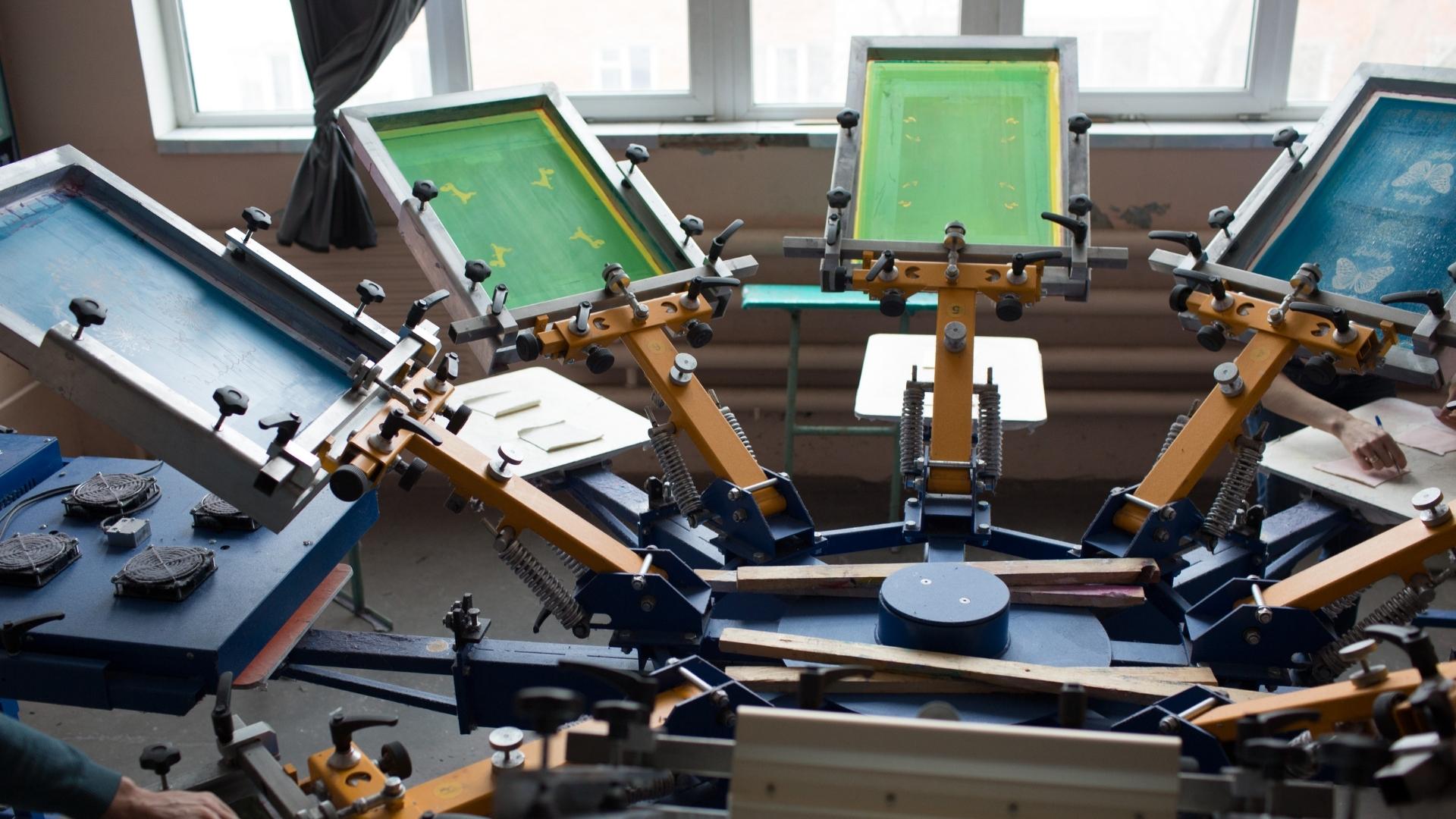ChatGPT said: The complete guide to 10:9 Design Screen Printing Texas
Wiki Article
The Essential Overview to Understanding Screen Printing and Its Versatile Utilizes
Screen printing has an abundant background that goes back to ancient times, progressing into an advanced strategy made use of across different markets today. This overview checks out the ins and outs of the screen printing procedure, detailing its applications in advertising, home, and style style - 10:9 Design Embroidery. Understanding these fundamentals can open up creative capacity for both creative and industrial jobs. The following sections will certainly disclose vital suggestions and methods to improve one's screen printing endeavorsThe History of Screen Printing
Although screen printing has roots that trace back centuries, its advancement mirrors the technological and creative innovations of numerous cultures. Coming from ancient China, the method was initially made use of for embellishing textiles and later infect Japan, where it came to be important to Ukiyo-e woodblock printing. The technique shifted to Europe in the 18th century, where it gained appeal among craftsmens and industrial printers. The innovation of image emulsion in the 20th century revolutionized screen printing, enabling even more elaborate styles and better efficiency. Artists like Andy Warhol better thrust its appeal, using the medium to create renowned jobs that combined commercialism and fine art. By the late 20th century, screen printing had actually established itself as a functional method, used in fashion, marketing, and fine art. Today, it remains to evolve, integrating electronic innovation and expanding its applications throughout numerous industries.The Screen Printing Process Explained
Screen printing transforms creative visions right into substantial styles via a series of accurate actions. Initially, a photo is created and then moved onto a screen, usually made of fine mesh material extended over a frame. A light-sensitive emulsion is used to the screen, which is exposed to light, setting in locations not covered by the photo. After washing out the unhardened solution, a pattern is created.Next, the screen is placed over the substrate, whether it be fabric, paper, or one more product. Ink is after that pressed with the open areas of the stencil utilizing a squeegee, transferring the layout onto the substrate below. This procedure can be duplicated for multiple colors, calling for separate screens for each shade. Lastly, the printed product is cured utilizing warmth to assure the ink sticks effectively, causing a long lasting, vibrant style all set for usage.
Kinds of Screen Printing Techniques

In addition, specialized techniques, such as discharge screen printing, eliminate dye from the material to develop softer prints, while foil screen printing applies metallic foil to achieve a shiny coating (10:9 Design LLC Company). Each method offers distinct characteristics, satisfying different creative requirements and manufacturing ranges, inevitably broadening the opportunities within the screen printing domain
Applications of Screen Printing in Different Industries

Additionally, the signs and advertising sectors utilize screen printing for developing eye-catching display screens and banners. This technique enables vibrant shades and complex styles that catch attention. In electronic devices, screen printing is utilized for using conductive inks to circuit card, vital for element connections. Additionally, the home decoration industry welcomes screen printing to create distinctive designs on fabrics and wall art. Overall, screen printing functions as a crucial device across varied fields, boosting items with individualized and visually enticing graphics.
Tips for Effective Screen Printing Projects
While carrying out a screen printing job, mindful interest to detail can considerably improve the last outcome. Choosing top quality materials is vital; this includes the screen, inks, and substratums. Utilizing more info ideal mesh counts can influence ink deposition and information resolution. Prep work is just as crucial; extensive cleansing of displays and appropriate direct exposure times guarantee crisp prints.Next, accurate registration is important for multi-color prints. Utilizing alignment tools can aid attain accurate layering. In addition, screening prints on scrap materials before manufacturing helps determine possible concerns without wasting resources.

Regularly Asked Questions
What Materials Are Ideal for Screen Printing on Material?
Cotton and polyester blends are optimal for screen printing on textile due to their longevity and ink absorption. Furthermore, specialized textiles like silk or canvas can create special textures and surfaces, enhancing the general style quality.How Do I Tidy and Maintain Screen Printing Equipment?
To preserve and cleanse screen printing tools, one should routinely clean displays with appropriate solvents, examine mops for wear, lubricate moving parts, and store all products in a dry, dust-free setting to lengthen their lifespan.What Are the Environmental Influences of Screen Printing?
Screen printing can have substantial ecological impacts, including chemical waste from inks and solvents, water use throughout cleaning procedures, and energy usage. Green products and sustainable techniques are essential for lessening these negative results.Can Screen Printing Be Done in the house Effectively?
Screen printing can be efficiently done at home with the ideal products and techniques. Hobbyists can create quality prints, though success relies on their skill degree, devices, and understanding of the procedure included.
What Are the Expenses Related To Beginning a Display Printing Service?

Starting a screen printing business involves prices for equipment, products, and work space. Initial costs normally range from a couple of hundred to a number of thousand dollars, depending on the range, high quality of equipment, and desired production capability.
Screen printing has an abundant background that dates back to old times, advancing into an advanced technique utilized across numerous sectors today. One more method, rotary screen printing, employs round displays, promoting continual printing on fabric rolls, thus boosting performance for massive productions. In addition, specialized strategies, such as discharge screen printing, get rid of dye from the textile to develop softer prints, while foil screen printing applies metal aluminum foil to accomplish a shiny surface. In the style market, screen printing is extensively used to develop vibrant designs on clothing, enabling brand names to showcase their unique styles. Cotton and polyester blends are excellent for screen printing on fabric due to their sturdiness and ink absorption.
Report this wiki page